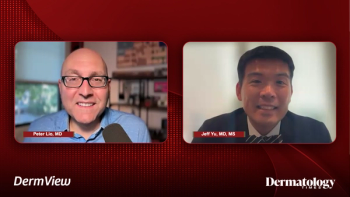
Role of Biosimilars and Assessing Clinical Impact
Drs Roy M. Fleischmann and Joel M. Gelfand discuss the roles of biosimilars and how to assess efficacy once a patient is switched to a biosimilar.
Episodes in this series

Roy M. Fleischmann, MD: In the United States, in the next few years, the approved biosimilars will primarily be TNF [tumor necrosis factor] inhibitors. If the PBM [pharmacy benefit manager] decides to go with a company that has a cheaper biosimilar, do you think that will be the preferred medication? You still have to go through step edits if you want to do something else.
Joel M. Gelfand, MD, MSCE, FAAD: Yes. This is going to be a key question going forward. I want to pick your brain on some of these questions. Let’s say you have a patient who’s on adalimumab and did well on it for 3 years and then lost response. Is that patient likely to recapture response with the biosimilar product? Or would your clinician side say, “No, I have to switch to a different mechanism of action.” How do you think about those issues?
Roy M. Fleischmann, MD: I’ll answer that question, but I want to know what you think first.
Joel M. Gelfand, MD, MSCE, FAAD: In theory, we don’t fully understand why people lose response to biologics. Some of it is felt to be development of antibodies to the drug. To the extent that’s the case, we’d predict that switching to the biosimilar is unlikely to recapture response. If someone has developed infusion reactions to infliximab, I don’t think you’d ordinarily switch them to a biosimilar version of infliximab and not expect them to have another significant infusion reaction to that product.
Roy M. Fleischmann, MD: My answer is a little different. No. 1, let’s talk about that initial patient. They’ve been on reference adalimumab for 3 years. They’re doing great. Let’s talk about a patient we both might see; someone with psoriatic arthritis. Their skin and joints are doing great on the bio-original adalimumab, and now you’re forced by the PBM to switch to a biosimilar. This biosimilar has interchangeability. The pharmacist makes that decision, you can’t argue it. What are the chances of that patient responding?
Based on the studies and registry data that we’ve seen from Europe, where they have about 10 years of experience with this, if the physician, nurse practitioner, PA [physician assistant], and infusion nurse are all on the same page and explain to the patient, “This molecule is exactly the same. Its coating is different,” explaining as you did with the difference in the generic pill, “And the chances of you responding are 95% or 99%,” then probably about 90% to 95% of patients won’t be able to tell the difference in terms of the clinical response.
One of the gripes I have with the biosimilar companies is that they said everybody should respond, so for the 5% or 10% or 15% of patients who do not respond, it must be a nocebo effect. It was just the opposite of a placebo effect, “I expect not to respond, and therefore I don’t.” That’s malarkey. It’s what you said before, that the chemical part, the target part of the molecule is identical, but the constellation or folding may be different, and different patients may absorb the drug differently. They may not respond. We’ve seen in studies and registries that when patients don’t respond to the biosimilar, if you go back to the bio-original, almost 100% of them will [respond]. The key is that almost everybody will.
There is no reason to not try it if it’s cheaper. I care about whether it’s cheaper to the patient. I don’t care about it being cheaper for the insurance company because the insurance company probably isn’t going to make it cheaper for the patient, and they probably aren’t going to reduce my cost of buying insurance. But scientifically, that should work.
Transcript edited for clarity
Newsletter
Like what you’re reading? Subscribe to Dermatology Times for weekly updates on therapies, innovations, and real-world practice tips.

















